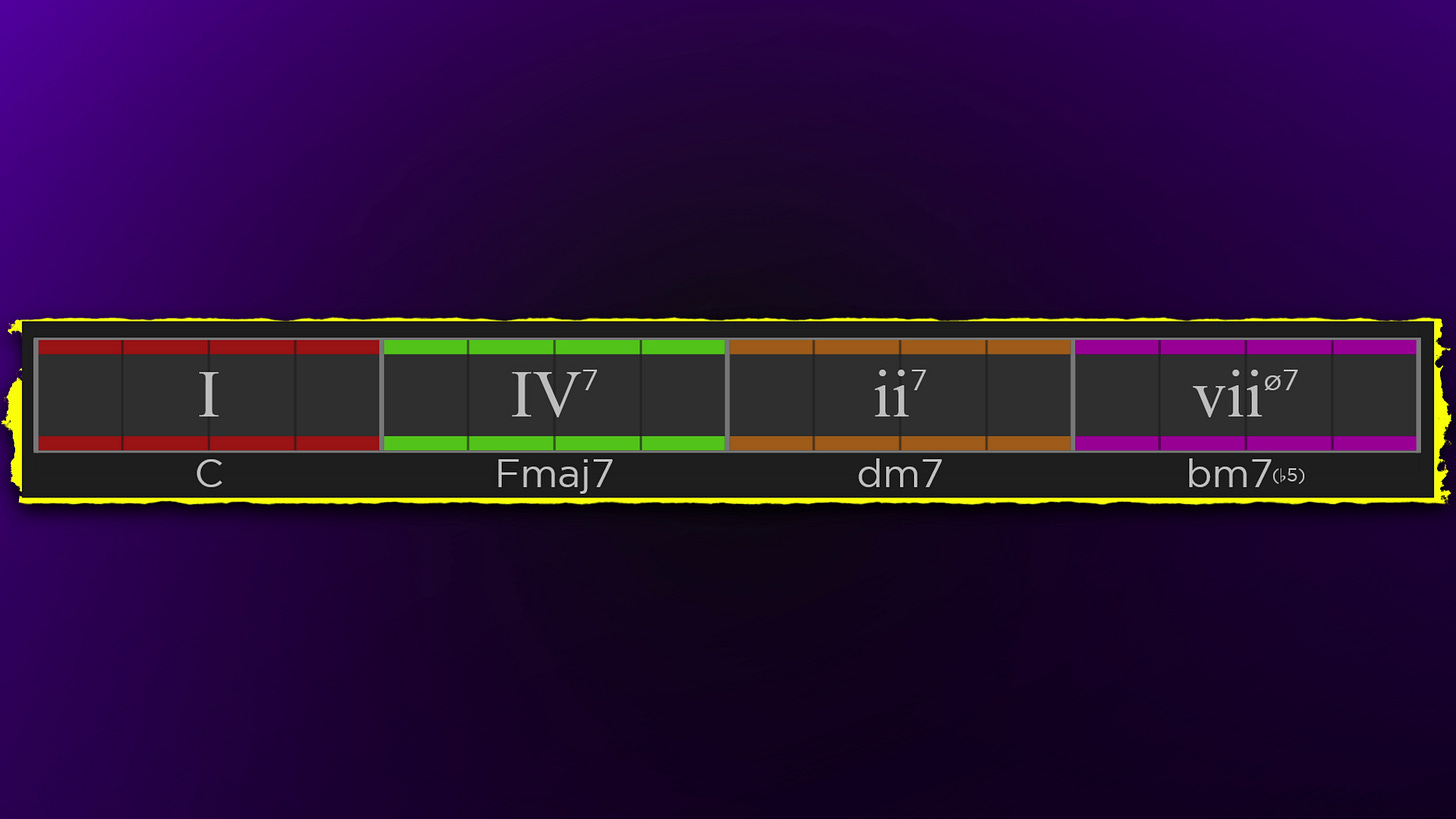How To Write A Song With 7th Chords
4 Useful Chords
Major 7th Chord
The first chord is the major 7th chord.
They have 4 notes , written as 1 3 5 and 7.
They have a smooth, relaxing sound which has strong associations with jazz.
In major keys you can naturally play the I chord and the IV chord as major 7ths.
One of the most popular way to use these chords is just to play them together as I and IV. Gently moving between these two chords creates a smooth, warm , comfortable feeling that has graced many a soft or yacht rock ballad, sailing off into the sunset.
Here's how that looks in the key of D major.
👇
Minor 7th Chord
Next up is the Minor 7th chord.
If you take a minor triad and add a minor 7th interval to it then you create a minor 7th chord.
This is a chord with the notes I ♭3 5 and ♭7
This is like a calmer, more relaxed minor chord. It’s not quite as sad as the stark minor triad.
They are easy to use and versatile. You can substitute any of the 3 diatonic minor chords in major or minor keys with minor 7th versions without any issue.
Now you know about major and minor 7th chords, you are free to use them anywhere in your progressions. Because they can be used as 5 of the 7 diatonic chords in major and minor keys, you can easily substitute them into your existing progressions. This can be great for adding some depth or interest and is something you’ll see all over popular music.
For example, look at this I vi ii IV progression in the key of C major. On repeat I’ll swap out all of the chords for their 7th chord equivalent.
👇
Dominant 7th Chord
The next chord is the dominant 7th chord.
The dominant 7th chord is like a hybrid of the previous two 7th chords.
You take a major triad and add a minor seventh interval to it.
This is written as 1 3 5 ♭7.
They have a unique major tension that is grittier and more unsettled than the standard major triad.
Dominant 7th chords feature diatonically as the V chord in major keys. You may know that the V chord in major keys is also called the dominant chord. This is where the chord gets it’s name and primary use from.
This V dominant 7th chord is used in major and minor keys to generate tension that wants to resolve with the tonic I / i chord. This is known as a cadence.
Here's an example of this in the C major key.
👇
The Half Diminished Chord
Finally it's the half diminished chord.
This is a chord with the notes I ♭3 ♭5 and ♭7
It is represented by the degree symbol with a line through it. You may also see a 7 after this symbol.
This chord can also be arrived at from a different angle.
Minor seventh chords are constructed with the notes I ♭3 5 and ♭7
If you drop the 5th note by half a step, then you create the half diminished chord.
For this reason, you’ll often see these chords called minor 7 ♭5, which is useful as the name describes the chord formula.
In major keys you can use these chords as simple substitutes for the V chord. For example in the key of C major
👇
If you want to learn more you can click here to watch a YouTube video exploring these ideas.





